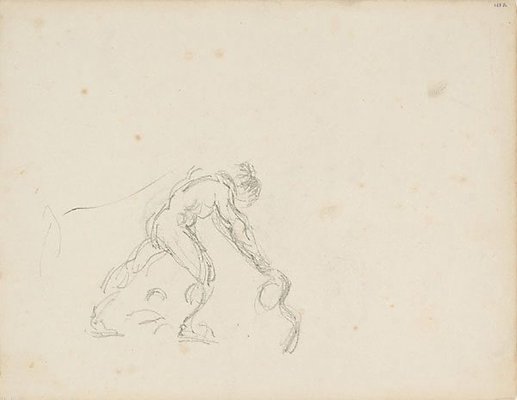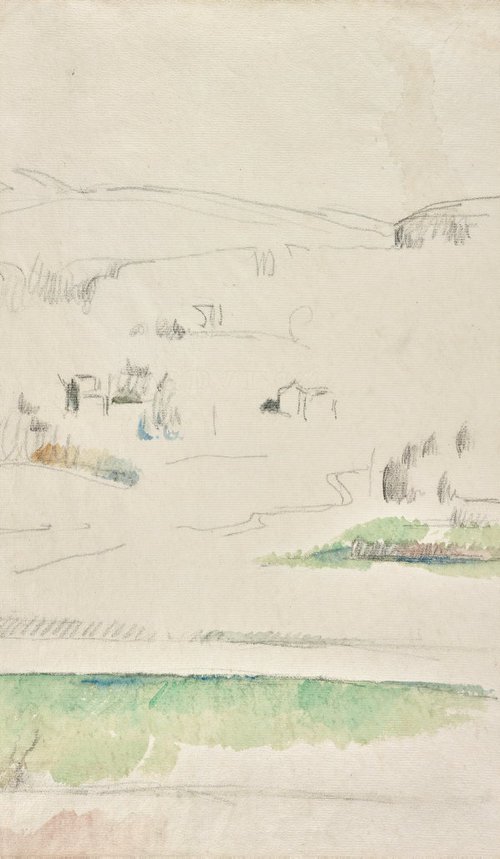Title
recto: The banks of a river, verso: Study of a bather
recto 1880-1890
verso 1880-1890
Artist
-
Details
- Dates
- recto 1880-1890
verso 1880-1890 - Media category
- Drawing
- Materials used
- pencil
- Dimensions
- 21.0 x 27.2 cm sheet
- Signature & date
Not signed. Not dated.
- Credit
- Purchased with funds provided by Margaret Olley 2003
- Location
- Not on display
- Accession number
- 270.2003
- Copyright
- Artist information
-
Paul Cézanne
Works in the collection
- Share
-
-
About
When Cézanne died little attention had been given to his works on paper, especially his drawings. The greatest consignment of the artist's drawings passed onto the art market via the famous Parisian art dealer, Paul Guillaume. (The enormous holdings of the Oeffentlische Kunstsammlung in Basel, the 50 drawings acquired by Sir Kenneth Clark for his own collection, as well as the great bulk of Adrien Chappuis' collection all came through this source).
Cézanne's drawings were no less idiosyncratic and contrary to academic ideals as were his paintings. Little by little, artists and then collectors began to discover great virtues, great beauties in them: "Sustained by its incomparable modulations, Cézanne's draughtsmanship remains among the most beautiful there is", declared the artist and teacher Andre Lhote in 1939.
Many peculiar features of Cézanne's drawings derive from his experience as an impressionist painter. The impressionists were notorious for blurring the distinction where one thing ended and another began. The extraordinary subtle modulation of the edge between water and foliage as seen in this drawing is wholly characteristic of Cézanne's exquisitely attenuated observation of nature. Like Whistler's Nocturnes, especially the example here at the AGNSW, this sheet gives almost the bare minimum of landscape. Yet no one but Cézanne could have conceived such a drawing, evoking so much with the sparest of means. It is typical of Cézanne to use the blankness of the paper as an evocation of space and light in his drawings. Equally, Cézanne treats the paper surface abstractly, dividing it into harmoniously proportioned zones, as decisive as the horizontal bands of a flag.
Of Cézanne's landscapes it would seem that this drawing corresponds most closely to paintings of the River Marne dating between 1888 and 1890. The verso bears a small, quick sketch of a bather who appears to be leaning over and touching the head of another figure who is still in the water.
-
Bibliography
Referenced in 4 publications
-
Adrien Chappuis, The drawings of Paul Cézanne: a catalogue raisonné, London, 1973, vol. 1: 202-3, 274; vol. 2: (illus.). cat.no. 795 (a) and 1219 (b)
-
Peter Raissis, Look, 'Auction coup', pg. 28-29, Sydney, Dec 2003-Jan 2004, 29 (illus.). illustration is of (a)
-
Jill Sykes (Editor), Look, 'The beauty of Cezanne's drawings', Sydney, Dec 2008-Jan 2009, 12 (illus.), 13. illustration is of (b)
-
Lionello Venturi, Cézanne: son art – son oeuvre, Paris, 1936, 312. no. 1315 (a and b)
-





